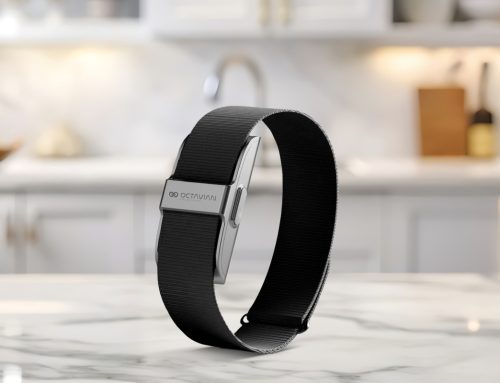Often, we view the outdoors as merely a space we pass through on our way to somewhere else. But what if we began to see it as a destination in its own right? The benefits of stepping outside extend far beyond the journey from point A to point B. It’s time to explore how embracing the outdoors can transform our health and well-being.
Benefits of Sunshine
Vitamin D is called the “sunshine vitamin” because when UV rays from sunlight hit your skin, they trigger the production of vitamin D. Vitamin D receptors are found in many parts of the body, including the intestines, colon, immune cells, brain, and skin. These receptors help regulate insulin production, control immune cell activity, prevent bowel diseases, and support heart function (2, 4). However, sunshine is just the first step in how our bodies utilize this essential micronutrient. After vitamin D is produced in the skin or absorbed from food, it must be processed in the liver. If your liver isn’t healthy or you have liver disease, this can affect how much vitamin D your body absorbs. In such cases, you may need to consult a healthcare professional about increasing your vitamin D intake. This could involve eating foods rich in vitamin D—such as mushrooms, microalgae, fatty fish, sunflower microgreens, and fortified foods (13)—spending more time in the sun, or taking vitamin D supplements (6).

There are two main types of vitamin D supplements: vitamin D2 (ergocalciferol) and vitamin D3 (cholecalciferol). Vitamin D3 is generally the preferred form, but it’s important to consult your healthcare provider before supplementing. They may recommend additional nutrients, such as vitamin K2, to help prevent calcium buildup in the arteries. However, vitamin K2 is not suitable for everyone, as it can interact with certain medications, including blood thinners. Be sure to discuss this with your doctor at your next appointment (28-29).
Certain medications can interfere with how your body processes vitamin D, including some steroids, anti-seizure drugs, and long-term medications. Additionally, vitamin D itself can reduce the effectiveness of certain medications if taken concurrently (14). This is why it’s crucial to inform your doctor about any over-the-counter vitamins and minerals you’re taking and to ask questions about potential interactions with your prescribed medications.
More Than Just Vitamin D
The body’s circadian rhythm, or internal clock, follows a 24-hour cycle and is heavily influenced by natural light. Morning sunlight exposure helps regulate the sleep-wake cycle, leading to better sleep quality (11). This is due to a thin layer of nerve tissue at the back of the eyes that contains special light-sensing cells called photoreceptors. When light hits these cells, they convert it into signals sent to the brain through the optic nerve (12). The brain then processes these signals to create visual images and regulate circadian rhythms.
Exposure to high-intensity natural daylight, such as when spending time outdoors, has been shown to improve sleep quality, influence sleep duration, and shift sleep timing to earlier hours (11).
Sunlight-Influenced Compounds
Sunlight plays a vital role in the synthesis and regulation of several nutrients in the human body beyond vitamin D, many of which are essential for insulin sensitivity and metabolic health:
- Direct Immune Suppression: Sunlight helps regulate the immune system, reducing inflammation that can contribute to insulin resistance. When skin is exposed to ultraviolet (UV) rays, it triggers immune responses that may help prevent autoimmune diseases by increasing messengers that calm the immune system and maintain balance (25).
- Alpha Melanocyte-Stimulating Hormone (α-MSH): Sun exposure stimulates this hormone, which reduces skin damage, lowers inflammation, and enhances gene repair, decreasing the risk of melanoma (25).
- Neuropeptide Substance P: Sunlight increases Substance P, which helps the body respond to sun exposure by boosting certain immune activities while temporarily calming the immune response in the exposed area (25).
- Endorphins: Spending time in the sun stimulates the body’s natural production of endorphins, which act as pain relievers and mood enhancers (25).
- Melatonin Regulation: Exposure to sunlight or bright artificial light in the morning promotes earlier melatonin production at night, making it easier to fall asleep (16).
- Serotonin Production: Research shows that the brain’s serotonin production is directly linked to the duration of bright sunlight exposure, which can positively affect mood and well-being (26).
- Nitric Oxide Activation: UV exposure triggers the release of anti-inflammatory agents like nitric oxide, which can help improve blood pressure by increasing serum nitrite levels within 20 minutes of skin exposure (27).
Ways to Use Sunlight to Your Advantage
- Start Your Day with Morning Sunshine
Begin your day by getting early morning sunlight, which helps regulate your circadian rhythm, improve sleep quality, and boost mood. Aim to spend 15–30 minutes outside within the first 30–60 minutes of waking to maximize these benefits. - Engage in Outdoor Activities You Love
Find an outdoor activity that brings you joy, such as hiking, painting, stretching, cycling, gardening, or walking in the park with a pet or friend. Enjoyable activities not only increase sunlight exposure but also support an active and healthy lifestyle. - Gradually Increase Sun Exposure
Sunlight offers health benefits through UVA and UVB rays, including the production of vitamin D, melanin, serotonin, and nitric oxide (27, 30). To safely build sun tolerance, start with short exposure during early morning or late afternoon when UV rays are less intense. Increase exposure gradually to allow your skin to adapt. If extended time outdoors is necessary, protect yourself with clothing, hats, or shade during peak hours (10 a.m. – 4 p.m.) to avoid burns. If sunscreen is needed, choose a broad-spectrum, mineral-based formula to reduce chemical absorption. The Environmental Working Group website offers options with safer ingredients. This balanced approach supports solar resilience while minimizing sunburn and long-term skin damage.offers options with safer ingredients. This balanced approach supports solar resilience while minimizing sunburn and long-term skin damage. - Consider Key Micronutrients
If you have limited sun exposure, consult your healthcare provider about vitamin D supplements or sun lamps. When supplementing due to low vitamin D levels, opt for vitamin D3, the most active form (31). Discuss with your provider whether vitamin K2 and calcium may also be beneficial for bone health (32), but be aware that vitamin K2 can interact with blood-thinning medications like warfarin. Beyond vitamin D, other micronutrients support sun protection and skin health. Antioxidants such as vitamins C, E, A, and glutathione help mitigate UV damage. Good sources include:- Vitamin C: Citrus fruits, peppers, strawberries, cauliflower, cabbage
- Vitamin E: Almonds, kiwifruit, butternut squash, sunflower seeds
- Vitamin A & Antioxidants: Carrots, sweet potatoes, mango, pumpkin, broccoli, kale
- Enjoy the Sunset
Spending time outdoors at sunset helps align your body’s internal clock with the natural shift from day to night. Evening light signals your brain to wind down and promotes melatonin production for restful sleep. This practice supports a healthy circadian rhythm and helps counteract the effects of artificial blue light, improving overall sleep quality (15).
Green Spaces and Indoor Plants
Studies define green spaces as any natural or open areas, including gardens, trees, grass, urban gardens, parks, recreation areas, grasslands, and forests (8). These spaces play a crucial role in air purification, as plants perform gas exchange to absorb and transform air pollutants through cellular processes (9).
If access to outdoor green spaces is limited, indoor plants can provide similar benefits. Plants help purify indoor air through processes like absorption, dilution, precipitation, and filtration (20). By absorbing carbon dioxide and releasing oxygen, they contribute to a healthier breathing environment (10).
Beyond air quality, indoor plants may positively impact physiological and psychological well-being by engaging the senses—touch, smell, sight, and feel. Their aesthetic appeal and calming effects can enhance mood, making them a valuable addition to any space.
Top 5 Air-Purifying Indoor Plants
- Snake Plant (Sansevieria trifasciata) – This popular plant effectively removes formaldehyde, acetone, benzene, bacteria, mold, and xylene from indoor air (19-20). A study found that having two to six of these plants in a room can reduce CO₂ concentrations by 10-19% (19).
- Spider Plant (Chlorophytum comosum) – Easy to care for and non-toxic to pets and children, this plant purifies air by absorbing carbon monoxide, formaldehyde, xylene, and other harmful gases.
- Peace Lily (Spathiphyllum) – With dark green, glossy leaves and a signature white spathe, the peace lily is both visually appealing and highly effective at removing toxins like ammonia, benzene, formaldehyde, and trichloroethylene, as well as airborne bacteria, actinomycetes, and mold (16). Although not lethal, it is toxic if ingested by pets or humans, so caution is advised (17).
- Aloe Vera – This hardy, sun-loving plant removes formaldehyde from the air while also offering skin-soothing benefits. Its gel has been traditionally used for treating burns, cuts, insect bites, and eczema (18).
- Areca Palm (Dypsis lutescens) – Also called the Butterfly Palm, this easy-to-grow plant features slender, silver-green trunks and feathery fronds that can reach 5-7 feet in length (21). It removes xylene, acetone, toluene, and formaldehyde from the air (22). Additionally, it acts as a natural humidifier, transpiring up to one liter of water per day when it reaches a height of 12-28 cm (23).
Bringing the Outdoors Into Everyday Life
Here are some practical ways to make nature a meaningful part of your daily routine while reaping its health benefits:
- Gardening – Plant and nurture your own garden to reduce stress and cultivate a sense of accomplishment.
- Park Visits – Set a goal to visit a local park at least twice a week for a stroll, jog, or moment of relaxation.
- Active Commuting – Walk, bike, or jog to nearby destinations like the store, a friend’s house, or work to integrate movement into your day while reducing your carbon footprint.
- Outdoor Meals – Enjoy meals outside whenever possible, whether at a picnic table in a park or your backyard.
- Morning Light – Start your day with at least five minutes of morning sunlight to boost mood and set a positive tone for the day.
- Stargazing – Unwind in the evening by watching the stars, a calming activity that fosters a sense of connection with nature.
- Geocaching – Add adventure to your walks by trying geocaching, a global treasure-hunting game.
- Birdwatching – Observe and appreciate the diverse bird species in your area, a relaxing hobby that enhances mindfulness.
- Community Service – Offer to walk a neighbor’s dog for fresh air, exercise, and companionship.
Sending Health Your Way!
The Tula Clinical Team
Reviewed by:
Aubree RN, BSN
Austin MS, RDN, CSR, LDN, CD
Tula Takeaways |
|---|
| 1. A Call to Step Outside: By treating the outdoors as a destination, we unlock a world of health benefits. Even just 10 minutes outside in the morning can invigorate your body and mind. |
| 2. Find Enjoyment: Think about ways to make your time outside enjoyable. This could mean inviting a friend to join you, calling a colleague during your activity, or listening to an audiobook, podcast, or the sounds of nature. |
| 3. Morning Sunshine: Try to get sunlight first thing in the morning upon waking. While it may be a challenging adjustment at first, you’ll soon feel the benefits as your sleep clock (circadian rhythm) resets, improving your rest at night. |
The LIVE TULA blog is informational and not medical advice. Always consult your doctor for health concerns. LIVE TULA doesn’t endorse specific tests, products, or procedures. Use the information at your own risk and check the last update date. Consult your healthcare provider for personalized advice.






